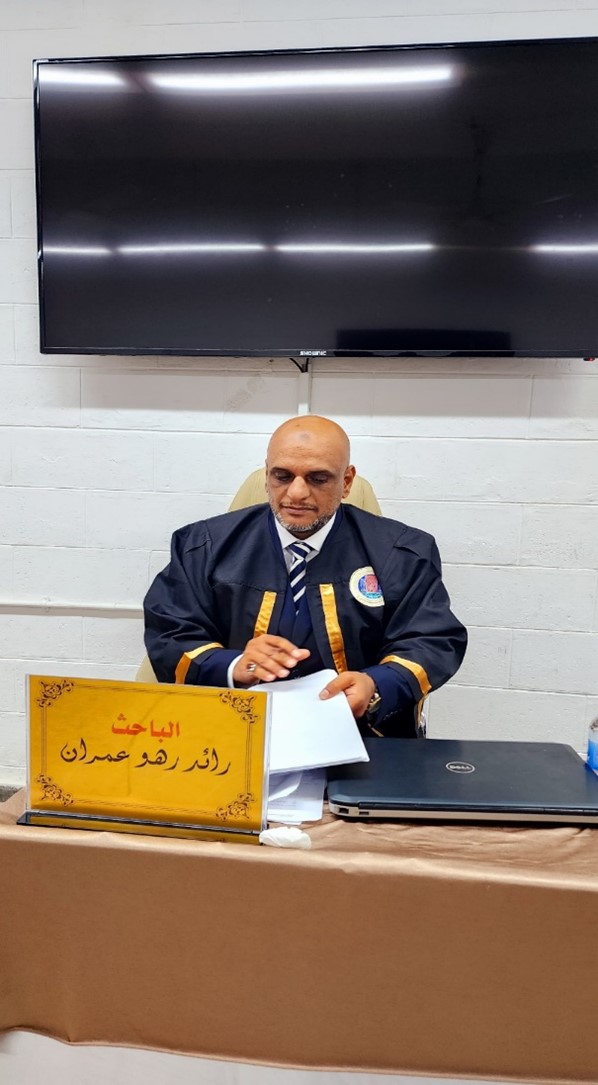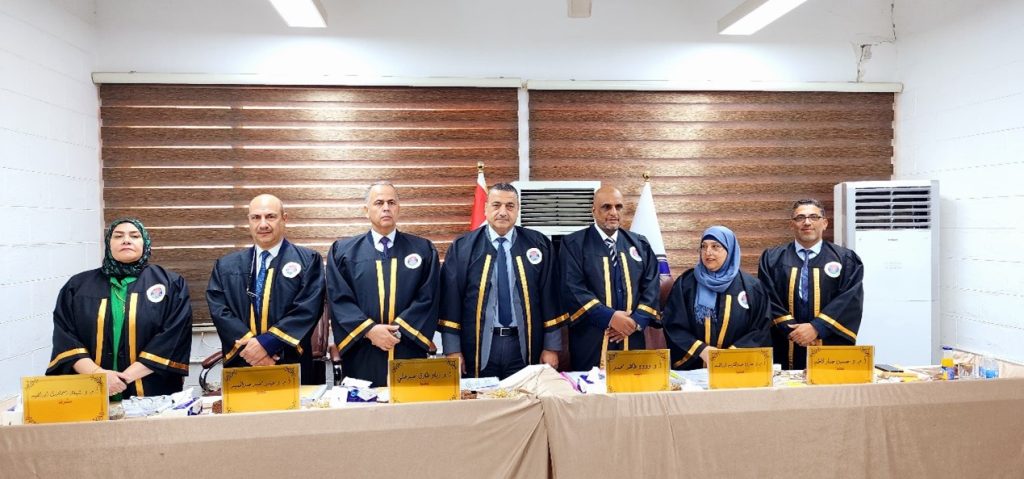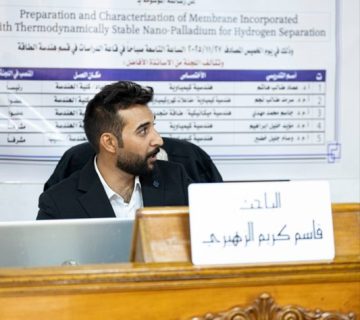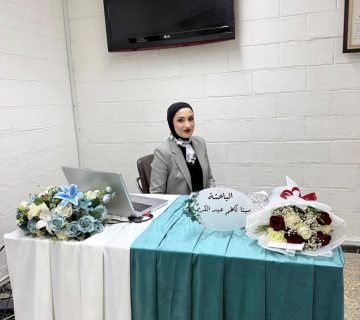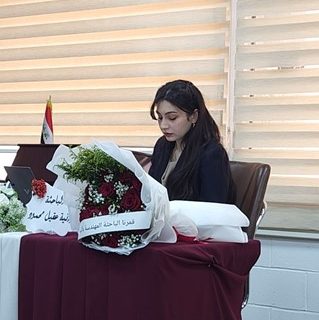Environmental Engineering Department at the College of Engineering, University of Baghdad, held PhD dissertation examination titled:
“Removal of lead, cadmium, Cobalt and Chromium Ions from Synthesized Wastewater Using Membrane Technology”
By the student Raed Raho Omran and supervised Prof. Dr. Shahlaa Esmail Ebrahim on Wednesday 6/11/2024, in the Environmental Engineering Department discussion hall. The examination committee consisted of Prof. Dr. Wadood Tahir Mohammed / Dean of Al-Kawarizmi College of Engineering as Chairman, and the membership of Prof. Dr. Ziad Tariq Abd Ali, Assistant Prof. Dr. Jathwa Abdulkareem Ibrahim/ Al-Bayan University, Assistant Prof. Dr. Hayder Mohammed Abdulhameed, and Assistant Prof. Dr. Hussein Jabbar Khadom. After conducting the public discussion and listening to the student’s defense, the dissertation was accepted. It was summarized as follows:
Many industrial wastewaters that contain heavy metals (HMs) can be produced as toxic pollutants that affect human and animal health. The purpose of this research is to evaluate the efficacy of an integrated membrane system that stages microfiltration, Reverse Osmosis (RO), and Nanofiltration (NF) in removing lead, cadmium, chromium, and cobalt ions from synthetic industrial effluent. The RO/NF pilot plant was used for all trials. Optimized removal efficiencies were achieved by experimenting with various operating settings, including HMs ion concentrations (10–500 ppm), pressures (3–11 bar), pH (4–7), and temperature (25, 35 °C). According to the results, the RO and NF systems were good methods to remove heavy metal ions from wastewater. The results demonstrated that the RO system achieved a removal efficiency (%R) in eliminating Pb+2 ions in which reach 98.55%, Cd+2 97.97%, Co+2 97.308%, and Cr+3 97.106% under operating conditions; pH=6, pressure= 11 bar, concentration= 500 ppm, time= 90 min, and T=25 °C, the higher (%R) was for Pb+2, then Cd+2, Co+2 and Cr+3. In the NF system, the highest %R was for Pb+2 ions which, reached 96.38%, Cd+2 ions reached 95.44%, Co+2 ions reached 94.28%, and Cr+3 ions reached 93.70%. These results were under operating conditions: pH=6, pressure= 11, concentration= 500 ppm, time= 90 min, and T=25 °C. The analysis indicates that the removal efficiency was decreased slightly with increasing temperature from 25°C to 35°C. It was observed that the flux was directly relative to the pressure when it increased from 3 to 11 bars, on the other hand, it was inversely proportional to the HMs concentrations. Total dissolved solids (TDS) were eliminated with a high-performance membrane. Models such as “combined-film theory/solution-diffusion” (CFSD), “combined-film theory/finely porous” (“CFFP”), in addition to “combined-film theory/Spiegler-Kedem” (“CFSK”) were utilized in evaluating the membranes. The apparatus achieved satisfactory experimental and theoretical results in determining the Peclet number (Pe), boundary layer thicknesses, and membrane conveyance parameters. he RO as well as NF membranes used in this analysis give success in separating heavy metals ions from simulated effluents based on experimental results and correlations. Since comparing the two membranes, both membranes gave a high optimum performance and were very suitable for removing HMs ions.
The recommendations of this dissertation:
1.Enhancing the performance and service life of RO and NF membranes by utilizing alternative preliminary treatment units, such as ultrafiltration or adsorption, prior to the membranes.
2.Studying the desalination of water using RO and NF membranes and evaluating their efficiency with real industrial effluent instead of synthetic wastewater.
3.Using other mathematical models
4.Studying the fouling for RO and NF membranes at different conditions.
- This research may be expanded to include other variables and different forms of organic and inorganic compounds.

